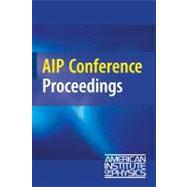Physics of Sustainable Energy: Using Energy Efficiently and Producing It Renewably, Berkeley, California 1-2 March 2008
, by Hafemeister, David; Levi, Barbara G.; Levine, Mark D.; Schwartz, Peter- ISBN: 9780735405721 | 0735405727
- Cover: Hardcover
- Copyright: 10/1/2008
As members of the American Physical Society's Forum on Physics and Society, we are concerned with the need to produce and use energy more wisely. One contribution we feel we can make is to educate fellow physicists, especially those who teach in our colleges and universities, about the technical details of some of the more promising techniques for efficient and renewable energy. To that end, we have organized a short course on the Physics of Sustainable Energy: Using Energy Efficiently and Producing It Renewably. The short course was intended to give physicists in-depth technical background needed to evaluate these issues for teaching and research. The year after the 1973-74 oil embargo, the APS leaped into action with a study on enhanced end-use efficiency, realizing that it is easier to save a kilowatt-hour than it is to produce a kilowatt-hour. The results of the APS study appeared in the 1975 AIP Conference Proceedings 25, titled Efficient Use of Energy. It launched the energy-careers of Art Rosenfeld, Rob Socolow, Marc Ross, Dave Claridge and others. The energy programs at Lawrence Berkeley National Laboratory and at Princeton are a direct result of AIP25. The LBNL energy program for buildings and appliances has had far more effect than any action on energy supply. Savings of 75% for refrigerators, 50% for lighting and 50% for buildings can be directly traceable to Building 90 at LBNL. Twenty years ago, the Forum organized a short course, Energy Sources: Conservation and Renewables, at the former Office of Technology Assessment in Washington, DC. The 700-page proceedings of that short course, AIP135, served as a useful textbook for such professors as Art Rosenfeld, then at the University California at Berkeley. The book also became a valuable reference in the libraries of many physics departments, where such applied topics are often scarce.







